Yonkers, New York, Hgh State Clinic, Hgh Injections, Hrt Doctors
Yonkers, New York Blood Testing Facilities
 Represents a LabCorp blood testing facility
Represents a LabCorp blood testing facility Represents a Quest Diagnostics blood testing facility
Represents a Quest Diagnostics blood testing facility
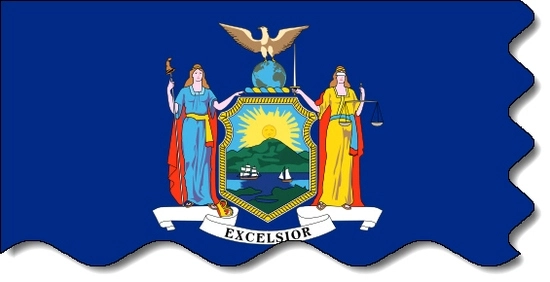
Nearby Labcorp Blood Testing facilities:
- Labcorp Center Distance: 2 m, 984 N Broadway Ste 301, Yonkers, Westchester County, NY, 10701
- Labcorp Center Distance: 4 m, 4876 Broadway, New York, New York County, NY, 10034
- Labcorp Center Distance: 5 m, 175 Memorial Hwy, New Rochelle, Westchester County, NY, 10801
- Labcorp Center Distance: 6 m, 521 West 181St Street, New York, New York County, NY, 10033
- Labcorp Center Distance: 7 m, 215 Old Hook Rd, Westwood, Bergen County, NJ, 7675
- Labcorp Center Distance: 8 m, 99 Dutch Hill Rd Ste 1200, Orangeburg, Rockland County, NY, 10962
- Labcorp Center Distance: 9 m, 297 Knollwood Rd Ste 102, White Plains, Westchester County, NY, 10607
- Labcorp Center Distance: 10 m, 5 East 98Th Street, New York, New York County, NY, 10029
- Labcorp Center Distance: 11 m, 311 North Midland Ave, Nyack, Rockland County, NY, 10960
- Labcorp Center Distance: 12 m, 2 Medical Park Dr Ste 7, West Nyack, Rockland County, NY, 10994
- Labcorp Center Distance: 13 m, 47-01 Queens Blvd 206-207, Sunnyside, Queens County, NY, 11104
- Labcorp Center Distance: 14 m, 200 E Eckerson Rd Ste 220, New City, Rockland County, NY, 10956
- Labcorp Center Distance: 15 m, 15 Third St 1St Fl, New City, Rockland County, NY, 10956
- Labcorp Center Distance: 16 m, 222 Route 59 Suite 202, Suffern, Rockland County, NY, 10901
- Labcorp Center Distance: 18 m, 300 Old Country Rd Ste 91, Mineola, Nassau County, NY, 11501
- Labcorp Center Distance: 19 m, 1540 Route 202 Ste 6, Pomona, Rockland County, NY, 10970
- Labcorp Center Distance: 20 m, 988 Broadway Suite 101, Bayonne, Hudson County, NJ, 7002
- Labcorp Center Distance: 21 m, 51 Charles Lindbergh Blvd, Uniondale, Nassau County, NY, 11553
- Labcorp Center Distance: 22 m, 165 North Village Ave Ste 110, Rockville Centre, Nassau County, NY, 11570
- Labcorp Center Distance: 23 m, 240 Port Richmond Ave, Staten Island, Richmond County, NY, 10302
- Labcorp Center Distance: 24 m, 1985 Crompond Rd Bldg B, Cortlandt Manor, Westchester County, NY, 10567
- Labcorp Center Distance: 25 m, 2333 Morris Ave Ste A12, Union, Union County, NJ, 7083
- Labcorp Center Distance: 26 m, 775 Park Ave Ste 350, Huntington, Suffolk County, NY, 11743
- Labcorp Center Distance: 27 m, 31 New Dorp Ln, Staten Island, Richmond County, NY, 10306
- Labcorp Center Distance: 28 m, 1025 W Saint Georges Ave Ste 1, Linden, Union County, NJ, 7036
- Labcorp Center Distance: 30 m, 4434 Amboy Rd 2Nd Fl, Staten Island, Richmond County, NY, 10312
- Labcorp Center Distance: 31 m, 656 N Wellwood Ave Ste 208A, Lindenhurst, Suffolk County, NY, 11757
- Labcorp Center Distance: 32 m, 313 South Ave Ste 104, Fanwood, Union County, NJ, 7023
- Labcorp Center Distance: 33 m, 400 W Main St Ste 304, Babylon, Suffolk County, NY, 11702
- Labcorp Center Distance: 35 m, 2509 Park Ave Suite 1D, South Plainfield, Middlesex County, NJ, 7080
- Labcorp Center Distance: 36 m, 2 Brooksite Dr, Smithtown, Suffolk County, NY, 11787
- Labcorp Center Distance: 37 m, Viking Village Rt 94 Bldg 3 A, Vernon, Sussex County, NJ, 7462
- Labcorp Center Distance: 38 m, 150 Islip Ave Ste 9, Islip, Suffolk County, NY, 11751
- Labcorp Center Distance: 39 m, 66 Town Centre Suite 310, Succasunna, Other, NJ, 7876
- Labcorp Center Distance: 40 m, 4750 Main St, Bridgeport, Fairfield County, CT, 6606
- Labcorp Center Distance: 41 m, 2500 Nesconset Hwy Ste 30-31, Stony Brook, Suffolk County, NY, 11790
- Labcorp Center Distance: 42 m, 227 Newton Sparta Rd Ste 8, Newton, Sussex County, NJ, 7860
- Labcorp Center Distance: 43 m, 4830 Sunrise Hwy, Sayville, Suffolk County, NY, 11782
- Labcorp Center Distance: 44 m, 5225 Route 347 Bldg 1314, Port Jefferson Stati, Suffolk County, NY, 11776
- Labcorp Center Distance: 45 m, 325 Middle Country Rd Ste C, Selden, Suffolk County, NY, 11784
- Labcorp Center Distance: 46 m, 1723 N Ocean Ave Ste D, Medford, Suffolk County, NY, 11763
- Labcorp Center Distance: 48 m, 254 B Mountain Ave Ste 104, Hackettstown, Warren County, NJ, 7840
- Labcorp Center Distance: 49 m, 285 Sills Rd Bldg 11D, East Patchogue, Suffolk County, NY, 11772
- Labcorp Center Distance: 50 m, 3520 State Route 33, Neptune, Monmouth County, NJ, 7753
- Labcorp Center Distance: 51 m, 239 Prospect Plains Rd Ste A102, Monroe Township, Middlesex County, NJ, 8831
- Labcorp Center Distance: 52 m, 45 Route 25A Ste E2, Shoreham, Suffolk County, NY, 11786
- Labcorp Center Distance: 54 m, 755 Campbell Ave Ste 3, West Haven, New Haven County, CT, 6516
- Labcorp Center Distance: 55 m, 1707 Atlantic Ave Ste 1, Manasquan, Monmouth County, NJ, 8736
- Labcorp Center Distance: 56 m, 279 Main St Ste 200, New Paltz, Ulster County, NY, 12561
- Labcorp Center Distance: 57 m, 617 A Montauk Hwy, Center Moriches, Suffolk County, NY, 11934
- Labcorp Center Distance: 58 m, 1592 Route 739, Dingmans Ferry, Pike County, PA, 18328
Nearby Quest Blood Testing facilities:
- Quest Center Distance: 2 m, 970 N Broadway, Yonkers, Westchester County, NY, 10701-1310
- Quest Center Distance: 3 m, 105 Stevens Ave, Mount Vernon, Westchester County, NY, 10550-2680
- Quest Center Distance: 5 m, 150 Lockwood Ave, New Rochelle, Westchester County, NY, 10801-4916
- Quest Center Distance: 6 m, 4071 Broadway, New York, New York County, NY, 10032-1511
- Quest Center Distance: 7 m, 261 Old Hook Rd, Westwood, Bergen County, NJ, 07675-3102
- Quest Center Distance: 8 m, 280 Dobbs Ferry Rd, White Plains, Westchester County, NY, 10607-1900
- Quest Center Distance: 9 m, 30 W Century Rd, Paramus, Bergen County, NJ, 07652-1421
- Quest Center Distance: 10 m, 210 E 86Th St, New York, New York County, NY, 10028-3003
- Quest Center Distance: 11 m, 3014 37Th St, Astoria, Queens County, NY, 11103-3809
- Quest Center Distance: 12 m, 420 Market St, Nanuet, Rockland County, NY, 10954-2744
- Quest Center Distance: 13 m, 137 East 36Th St, New York, New York County, NY, 10016-3528
- Quest Center Distance: 14 m, 7010 Austin St, Forest Hills, Queens County, NY, 11375-1021
- Quest Center Distance: 15 m, 151 N Main St, New City, Rockland County, NY, 10956-3851
- Quest Center Distance: 16 m, 16624 Jamaica Ave, Jamaica, Queens County, NY, 11432-5241
- Quest Center Distance: 17 m, 978 Route 45, Pomona, Rockland County, NY, 10970-3528
- Quest Center Distance: 18 m, Indian Rock Shopping Center, Suffern, Rockland County, NY, 10901-4822
- Quest Center Distance: 19 m, 520 Franklin Ave, Garden City, Nassau County, NY, 11530-5801
- Quest Center Distance: 20 m, 83 South Bedford Rd, Mt. Kisco, Westchester County, NY, 10549-3457
- Quest Center Distance: 21 m, 391B Fulton Ave, Hempstead, Nassau County, NY, 11550-4127
- Quest Center Distance: 22 m, 269 Jericho Tpke, Syosset, Nassau County, NY, 11791-4502
- Quest Center Distance: 23 m, 653 Forest Ave, Staten Island, Richmond County, NY, 10310-2517
- Quest Center Distance: 24 m, 1460 Victory Blvd, Staten Island, Richmond County, NY, 10310-3914
- Quest Center Distance: 25 m, 1869A E Main St, Peekskill, Westchester County, NY, 10566-2505
- Quest Center Distance: 26 m, 175 E Main St, Huntington, Suffolk County, NY, 11743-2912
- Quest Center Distance: 27 m, 2627 Hylan Blvd, Staten Island, Richmond County, NY, 10306-4320
- Quest Center Distance: 28 m, 50 Cherry Hill Rd, Parsippany, Morris County, NJ, 07054-1101
- Quest Center Distance: 29 m, 4900 Merrick Road, Massapequa Park, Nassau County, NY, 11762-3807
- Quest Center Distance: 30 m, 189 Elm St, Westfield, Union County, NJ, 07090-3145
- Quest Center Distance: 31 m, 4855 Hylan Blvd, Staten Island, Richmond County, NY, 10312-6319
- Quest Center Distance: 32 m, 1350 Deer Park Ave, North Babylon, Suffolk County, NY, 11703-1619
- Quest Center Distance: 33 m, 500 West Main St, Babylon, Suffolk County, NY, 11702-3009
- Quest Center Distance: 35 m, 477 Route 10 East, Randolph, Morris County, NJ, 07869-2147
- Quest Center Distance: 36 m, 490 Wheeler Rd, Hauppauge, Suffolk County, NY, 11788-4372
- Quest Center Distance: 37 m, 222 Middle Country Rd, Smithtown, Suffolk County, NY, 11787-2814
- Quest Center Distance: 38 m, 1 Anderson Hill Rd, Bernardsville, Somerset County, NJ, 07924-2320
- Quest Center Distance: 39 m, 30 Hatfield Ln, Goshen, Orange County, NY, 10924-6766
- Quest Center Distance: 40 m, 347 Fullerton Ave, Newburgh, Orange County, NY, 12550-3726
- Quest Center Distance: 41 m, 240 Maple Ave, Red Bank, Monmouth County, NJ, 07701-1731
- Quest Center Distance: 42 m, 23 Technology Dr, East Setauket, Suffolk County, NY, 11733-4069
- Quest Center Distance: 43 m, 125 Newton Sparta Rd, Newton, Sussex County, NJ, 07860-2812
- Quest Center Distance: 44 m, 1010 Route 112, Port Jefferson Station, Other, NY, 11776-2054
- Quest Center Distance: 47 m, 50 Franklin Ln, Manalapan, Monmouth County, NJ, 07726-2774
- Quest Center Distance: 48 m, 137 Mountain Ave, Hackettstown, Warren County, NJ, 07840-2307
- Quest Center Distance: 49 m, 570 Expressway Dr South, Medford, Other, NY, 11763-2049
- Quest Center Distance: 50 m, 1809 Corlies Ave, Neptune, Monmouth County, NJ, 07753-4801
- Quest Center Distance: 52 m, 260 Mounts Corner Dr, Freehold, Monmouth County, NJ, 07728-5300
- Quest Center Distance: 54 m, 3 Liberty St, Plainsboro, Middlesex County, NJ, 08536-2084
- Quest Center Distance: 55 m, 6144 Route 25A, Wading River, Suffolk County, NY, 11792-2018
- Quest Center Distance: 56 m, 246 Main St, New Paltz, Ulster County, NY, 12561-1608
- Quest Center Distance: 57 m, 4530 Route 9 South, Howell, Monmouth County, NJ, 07731-3771
- Quest Center Distance: 60 m, 3000 Dixwell Ave, Hamden, New Haven County, CT, 06518-3522
Yonkers New York Hormone Replacement Therapy Services
The 21st century has had an amazing series of medical breakthroughs that will inevitably change the world and the way that people live forever. One of the fastest growing fields of medicine over the last 20 years is the science of Hormone Optimization and Restoration. Hormone balance is one of the keys to maintaining good health and a long life, and two of the most important hormones that our body produces are Testosterone and Human Growth Hormone.
Testosterone is largely responsible for male strength, potency, and virility. Testosterone is, essentially, what turns a boy into a man. Women need the hormone too, in order to mediate physiological function in conjunction with Estrogen. Human Growth Hormone, on the other hand, is responsible for growth and maintenance. It keeps the body functioning at optimal capacity during adulthood and facilitates growth during childhood.
The Conscious Evolution Institute is a national provider of Hormone Restoration Therapy, and is licensed and board certified to provide Legal Hormones to needy patients. We focus on patients of at least thirty years of age, and have the logistical ability to assess your Hormone State and potential need for treatment through the use of medical affiliates that we have all across the United States, including in the Yonkers and greater New York City Metropolitan Area.
If you've been curious about the benefits of HGH Therapy or the Pros and Cons of Testosterone Creams and Injections, our friendly Hormone Doctors can answer any questions that you may have about any of the treatments that we have to offer!
Human Growth Hormone Clinics of Yonkers New York
HGH is one of the most-talked about hormones in America today. Most people only understand certain things about Human Growth Hormone, like how it's used for Performance Enhancement by athletes, or how it is often sold illegally. Too many people don't know, however, all the good things about Human Growth Hormone, and what Bio-Identical HGH Therapy can do for men and women with Clinical Growth Hormone Deficiency.
Hypogonadism is a real and serious medical condition that becomes more likely for a person to experience with every passing year. This is because, starting around the age of thirty, the human body simply starts to produce less and less of this imminently vital hormone, which can eventually lead to a wide variety of symptoms, ranging from poor sleeping habits to weight, and from increased incidence of illness to depression. Because HGH affects so many different systems within the human body, Low Growth Hormone Levels can have a horrible short term and long term effects.
With Recombinant HGH Shots, it is possible to boost Growth Hormone Levels back to the normal range, improving vitality and bolstering health. With Subcutaneous HGH, it is possible to vastly improve quality of life, especially when used in combination with lifestyle changes.
Sermorelin Prescriptions in Yonkers New York
HGH is not the only viable treatment option for patients with Diagnosed Growth Hormone Deficiency. Sermorelin Acetate is another quality HRT Product on the market that is just as effective for the majority of patients with Age-Related Growth Hormone Deficiency in restoring normalized HGH Balance. Sermorelin is a derivitive of the hormone released by the pituitary which triggers the release of Human Growth Hormone, known as GH-RH. With Sermorelin, the Pituitary Gland is still responsible for the normal release of HGH to the liver and throughout the bloodstream, and the body more readily regulates Growth Hormone Levels, preserving a more ideal pattern of overall Hormone Release. Sermorelin is more affordable than its counterpart, and can also be prescribe off-label at the discretion of a qualified Hormone Specialist.
Yonkers Testosterone Clinics for Low-T and Testosterone Deficiency
Andropause is a major health issue for men, with a risk of noticeable symptoms beginning usually in the forties or fifties, but sometimes as early as a man's thirties. Andropause is best characterized as the Male Menopause, and has a serious impact on sexual performance and libido for many men. Beyond the sexual problems associated with Andropause, Age-Related Low-T also leas to a variety of other medical issues which can significantly impact both wellness and long-term mortality. Men with Low-T are more likely to be obese, have heart attacks, and lack the energy to live their life.
If you feel like you may be falling victim to Testosterone Deficiency, the Conscious Evolution Institute is qualified to assess your Testosterone Levels and provide you with Affordable Testosterone Prescriptions for products such as Testosterone Enanthate and Low-T Gels and Creams. Contact us to arrange for an assessment of your Hormone Balance with one of our local affiliates!
Yonkers New York Information
Yonkers is located just across the Hudson River from New York City, and is one of the biggest cities in New York State, only behind NYC, Rochester, and Buffalo in terms of population. Yonkers actually had the opportunity to be a Borough of New York City in the late 19th Century, but voted against the deal, thus retaining its identity as a unique city. It is frequently referred to as the Sixth Borough, because its long and interconnected history with New York City. Yonkers is the biggest city in Westchester County.
Like New York City, Yonkers is an extremely culturally diverse area, and different neighborhoods have significantly different demographic makeups. Neighborhoods in Yonkers include Dunwoodie, Lincoln Park, Lawrence Park, Colonical Heights, Nodine Hill, Getty Square, Cedar Knolls, and Crestwood. Yonkers is home to two golf courses: Sprain Lake Golf Course and Dunwoodie Golf Course.
Yonkers Places of Interest
There are a variety of landmarks in Yonkers, such as Tibbetts Brook Park, Yonkers Raceway, and Untermyer Park, which is a city park dedicated to maintaining some of the historic beauty that has long graced the city. The Hudson River Museum is another popular location for people interested in the history of Yonkers, and the museum is located by Trevor Park. Another thing to do that's fun for people of all ages is the Science Barge. The barge uses hydroponic technology for gardening, and has a wide variety of interesting science exhibits.
Yonkers Arts and Entertainment
The most popular area for the arts in Yonkers is the Carpet Mills Art District. Every May, Yonkers celebrates the arts citywide during Yonkers Art Weekend. Festivals in Yonkers include Yonkers Riverfest and the Cross County Shopping Center Cityfest. Yonkers is also a great place for people to visit that are fans of boating of any kind, as it is home to the JFK Marina. Another great location on the Hudsom Bay Waterfront is the Yonkers Recreational Pier, an area loaded with shops and entertainment that appeal to people of all ages.
All About Yonkers, New York Geographic Area
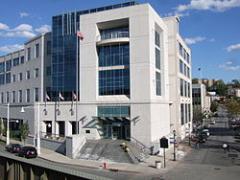
Yonkers is the fourth most populous city in the U.S. state of New York (behind New York, Buffalo, and Rochester), and the most populous city in Westchester County, with a population of 195,976 (according to the 2010 Census). Yonkers borders the New York City borough of The Bronx and is 2 miles (3 km) north of Manhattan at the cities' closest points.
The city is home to several attractions: the Hudson River Museum, the Sherwood House, the Science Barge, Cross County Shopping Center, Ridge Hill Shopping Center, and Yonkers Raceway, a harness racing track that has renovated its grounds and clubhouse and added legalized video slot machine gambling in 2006 in a "racino" called Empire City. There are also many large shopping areas along Central Park Avenue (NY 100), informally called "Central Ave" by area residents, a name it takes officially a few miles north in White Plains, New York.
The land on which the city is built was once part of a 24,000 acre (97 km ²) land grant called Colen Donck that ran from the current Manhattan/Bronx border at Marble Hill northwards for 12 miles (19 km), and from the Hudson River eastwards to the Bronx River. This grant was purchased in July 1645 by Adriaen van der Donck, a lawyer, scholar, and author who had emerged as a leader of the New Netherland colony. Van der Donck was known locally as the Jonkheer or Jonker (etymologically, "young gentleman," derivation of old German jung and Herr; in effect, "Esquire"), a word from which the name "Yonkers" is directly derived. Van der Donck built a saw mill near where the Nepperhan Creek met the Hudson; the Nepperhan is now also known as the Saw Mill River. Van der Donck and his family were killed in the Peach Tree War.
Near the site of van der Donck's mill is Philipse Manor Hall, a Colonial-era manor house which today serves as a museum and archive, offering many glimpses into life before the American Revolution. The original structure (later enlarged) was built around 1682 by Frederick Philipse and his wife Margaret Hardenbroeck. Frederick was a wealthy Dutchman who by the time of his death had amassed an enormous estate, which encompassed the entire modern City of Yonkers, as well as several other Hudson River towns. Philipse's great-grandson, Frederick Philipse III, was a prominent Loyalist during the American Revolution, who, because of his political leanings, was forced to flee to England. All the lands that belonged to the Philipse family were confiscated and sold.
For its first two hundred years, Yonkers was a small farming town with an active industrial waterfront. Yonkers's later growth rested largely on developing industry. In 1853, Elisha Otis invented the first safety elevator and the Otis Elevator Company, opened the first elevator factory in the world on the banks of the Hudson near what is now Vark Street. It relocated to larger quarters (now the Yonkers Public Library) in the 1880s. Around the same time, the Alexander Smith and Sons Carpet Company (in the Saw Mill River Valley) expanded to 45 buildings, 800 looms, and over 4,000 workers and was known as one of the premier carpet producing centers in the world. In 1892, Smith carpets were sent to Moscow for the tsar's coronation. Bakelite, the first completely synthetic plastic, was invented in Yonkers circa 1906 by Leo Baekeland, and manufactured there until the late 1920s. Today, two of the former Alexander Smith and Sons Carpet Company loft buildings located at 540 and 578 Nepperhan Avenue have been repurposed to house the YoHo Artist Community, a collective group of talented artists that works out of private studios there.
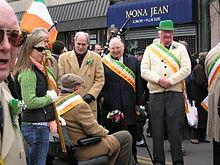
The community was incorporated as a village in the northern part of the Town of Yonkers in 1854, and as a city in 1872. The southern part of the Township became part of The Bronx. The city declined to join the City of Greater New York,and plans were dropped to extend the new subway to Getty Square. Aside from being a manufacturing center, Yonkers also played a key role in the development of entertainment in the United States. In 1888, Scottish-born John Reid founded the first golf course, with just three holes, in the United States, St. Andrew's Golf Club, in Yonkers.
Early in the 20th Century, Yonkers also hosted a brass era automobile maker, Colt Runabout Company; despite the car's seemingly glowing performance, the company went under.
Yonkers was also the headquarters of the Waring Hat Company, at the time the nation's largest hat manufacturer. World War II saw the city's factories manufacture such items as tents and blankets in the Alexander Smith and Sons Carpet Factory and tanks in the Otis Elevator factory.
After World War II, however, with increased competition from less expensive imports, Yonkers lost much of its manufacturing activity. The Alexander Smith Carpet mill fell on hard times and ceased operation on June 24, 1954. In 1983, the Otis Elevator Factory finally closed its doors. With the loss of jobs in the city itself, Yonkers (predominantly the east side) became primarily a residential city and some neighborhoods of the city, such as Crestwood, became popular with wealthy New Yorkers wishing to live outside the city but not in an entirely suburban environment. Yonkers' excellent transportation infrastructure, including three commuter railroad lines (now two, the Harlem and Hudson Lines) and five parkways and thruways, as well as its 15-minute drive from Manhattan and picturesque "period" homes and apartments, made it a desirable city in which to live. Yonkers' manufacturing sector has recently shown a resurgence. A Kawasaki railroad cars assembly plant opened in 1986 in the former Otis plant, producing the new R142A, R143 and R160B cars for the New York City Subway, and the PA4 and upcoming PA5 series for PATH.
On January 4, 1940, Yonkers resident Edwin Howard Armstrong transmitted the first FM radio broadcast (on station W2XCR) from the Yonkers home of C.R. Runyon, a co-experimenter. Yonkers also had the longest running pirate radio station, owned by Allan Weiner during the 1970s through the 1980s.
In 1960, the Census Bureau reported Yonkers's population as 95.8% white and 4.0% black. The city's struggles with racial discrimination and segregation were highlighted in a decades-long federal lawsuit. After a 1985 decision and an unsuccessful appeal, Yonkers' schools were integrated in 1988. The federal judge, Leonard B. Sand, ruled that Yonkers had engaged in institutional segregation in housing and school policies for over 40 years and tied the illegal concentration of public housing and private housing discrimination to the city's resistance to ending racial isolation in its public schools.
Yonkers moved to the center of national/international attention during the summer of 1988, when the city was found in contempt of the federal courts, after it refused to build promised municipal public housing in the eastern portions of the city. It had earlier agreed to do so in a consent decree, after losing the appeal in 1987. Being fined one dollar, doubling every day until the council passed the ordinance set out in the consent decree, Yonkers remained in contempt of the courts until September 9, 1988. On that date, the City Council relented, in the wake of library closures, sanitation cutbacks, while looking at massive city layoffs, which would have been required to continue its resistance to desegregation.
In the 1980s and 1990s, Yonkers developed a national reputation for racial tension, based on a long-term battle between the City of Yonkers and the NAACP over the building of subsidized low-rent housing. The City wanted to use federal funds to create or expand high-rise housing projects in southwest Yonkers; other groups, led by the NAACP, felt that concentrating subsidized housing in traditionally poor neighborhoods perpetuated poverty. The climax of the battle came when United States district court Judge Leonard Sand imposed a fine on Yonkers which started at $1 and doubled every day until the City capitulated to the federally mandated plan.
Mayor Nicholas Wasicsko, in his first term, fought to save the city from financial disaster and bring about unity. He was a lonely figure in city politics at the time, which was scarred with the stigma of the "Balkanization of Yonkers." He succeeded in helping to end the city's contempt of the courts, but was voted out of office as a result. Yonkers still suffers the stigma of having bitterly opposed desegregation.
The Irish-American community is prominent in Yonkers, and the city hosts one of the nation's oldest St. Patrick's Day parades. There is also home to a large Italian-American community, and the city hosts a large Columbus Day festival with a Miss Italian-American pageant.Yonkers also has a significant Portuguese population.
Another large community is the Slavic community. In the early and mid 20th Century a large amount of people emigrated from Poland, Ukraine, Czechoslovakia, Russia, and Croatia. Recently a large number of immigrants from the former Yugoslavia have called Yonkers home. The Slavic community is centered around St. Casimir's Roman Catholic Church, Most Holy Trinity Roman Catholic Church, Holy Trinity Russian Orthodox Church, and St. Michael's Ukrainian Catholic Church. Yonkers still has a large Slavic community. The city also has a "stanytsia" (branch) of Plast. Yonkers also has a large Arab population, coinciding with the high percentage of Arab speakers in Yonkers. Most of these Arabs come from The Levant, from mainly the countries of Jordan, Palestine, and Lebanon, and are of the Christian faith.
There also once was a significant Jewish population (the Broadway plays Hello Dolly! and Lost in Yonkers both take place within the Yonkers Jewish community). However, it has dwindled. In the 2000s, some areas bordering similar neighborhoods in Riverdale began seeing an influx of Orthodox Jews. Subsequently, Riverdale Hatzalah Volunteer Ambulance Service began serving some neighborhoods in the southwest section of the city. There is also a small Jewish Cemetery, the Sherwood Park Cemetery
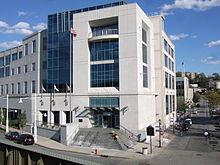
Amidst a growing need for increased economic viability in Yonkers, a vast revitalization project proposal, promising to add luxury housing, waterfront development, commercial and retail space, has been designed for the city. With hopes of increasing the city's tourism and economic importance in the state and county, the project is one of the largest revitalization projects ever proposed for any locality within the New York Metropolitan Area, totaling more than $3 billion.
The project is headed by Westchester County's Louis R. Cappelli, Struever Bros. of Baltimore, and New Jersey's Fidelco Realty. The project is expected to include a Minor League Baseball stadium, New Yonkers Fire Department Headquarters Building (Station 1), and an expansive retail and residential project, adding approximately 800 residential units throughout the downtown area and the waterfront.
The city is spread out over hills rising from near sea level at the eastern bank of the Hudson River to 416 feet (126 m) at Sacred Heart Church, whose spire can be seen from Long Island, New York City, and New Jersey. Its landscape has been compared to San Francisco, Sarajevo, and Rome.
The city occupies 20.3 square miles (52.6 km ²), including 18.1 square miles (46.8 km ²) of land and 2.2 square miles (5.8 km ²) (11.02%) of water, according to the United States Census Bureau. The Bronx River separates Yonkers from Mount Vernon, Tuckahoe, Eastchester, Bronxville, and Scarsdale to the east. The town of Greenburgh is to the north, and on the western border is the Hudson River.
On the south, Yonkers borders the Riverdale, Woodlawn, and Wakefield sections of The Bronx. In addition, the southernmost point of Yonkers is only 2 miles (3 km) north of the northernmost point of Manhattan when measured from Broadway & Caryl Avenue in Yonkers to Broadway & West 228th Street in the Marble Hill section of Manhattan. The gentilic for residents is alternately Yonkersonian or Yonkersite
Climate: Yonkers has cold winters and warm summers. Temperature ranges average lows of 27 degrees F in January, and average highs of 84 degrees F in July.
As of the census of 2010, there are 195,976 people in the city. The population density is 10,827.4 people per square mile (4,187.5/km ²). There are 80,839 housing units at an average density of 4,466.2 per square mile (1,727.3/km ²). The cultural makeup of the city is 55.8% White, 18.7% African American, 0.7% Native American, 5.9% Asian, 0.1% Pacific Islander, 14.7% from other races, and 4.1% from two or more races. 34.7% of the population are Hispanic or Latino of any racial background. Non-Hispanic Whites were 41.4% of the population in 2010, down from 89.9% in 1970.
According to the 2000 Census, 19.9% were of Italian and 11.6% Irish descent. 61.3% spoke English, 22.7% Spanish, 3.9% Italian, 5% Arabic and 1.3% Portuguese as their first language.
There were 74,351 households out of which 30.9% have children under the age of 18 living with them in 2000, 44.2% are married couples living together, 17.2% have a female householder with no husband present, and 33.7% are non-families. 29.2% of all households are made up of individuals and 11.9% have someone living alone who is 65 years of age or older. The average household size is 2.61 and the average family size is 3.23.
In 2000, the city the population is spread out with 24.3% under the age of 18, 8.8% from 18 to 25, 30.6% from 25 to 45, 21.2% from 45 to 65, and 15.0% who are 65 years of age or older. The median age is 36 years. For every 100 females there are 88.6 males. For every 100 females age 18 and over, there are 84.2 males.
The median income for a household in the city was $44,663 in 2000, and the median income for a family is $53,233. Males have a median income of $41,598 versus $34,756 for females. The per capita income for the city is $22,793. 15.5% of the population and 13.0% of families are below the poverty line. Out of the total population, 24.8% of those under the age of 18 and 9.9% of those 65 and older are living below the poverty line.
Though Yonkers contains many small residential enclaves and communities, it can conveniently be divided into four quarters, demarcated by the Saw Mill River. There are 37 or more distinct neighborhoods, many of these names being rarely used except by real estate agents.
Northeast Yonkers, is a primarily Irish-American and Italian-American area. Though suburban, it is noticeably less so than the Town of Greenburgh to the north. House sizes vary widely, from small houses set close together, to some larger houses in areas like Lawrence Park West. Tuckahoe Road, which intersects Central Avenue (NY 100), contains many stores as well. Notable former residents include Steven Tyler (born Steven Tallarico) of the rock band Aerosmith, whose childhood home was just off Central Avenue on Pembrook Drive. Northeastern Yonkers contains the desirable Crestwood, Colonial Heights, Cedar Knolls, and Beech Hill sections of the city, as well as several other wealthy enclaves such as Lawrence Park West. Landmarks include St Vladimir's Seminary, as well as Sarah Lawrence College, and the Tanglewood Shopping Center (one-time home of the The Tanglewood Boys gang). The northeast section of Yonkers consists of more upscale housing than the rest of the city, and, due to the proximity of several Metro-North commuter railroad stations, its residents tend to be employed in corporate positions in Manhattan.
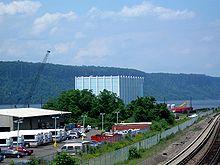
Northwest Yonkers is a collection of widely varying neighborhoods, spanning from the Hudson River to around the New York State Thruway/I-87 and from Ashburton Avenue north to the Hastings-on-Hudson border. With the Hudson River bordering it to the west, this area has many beautiful Victorian-era homes with panoramic views of the Palisades. An interest in historic preservation has taken hold in this neighborhood in recent years, as demonstrated on streets like Shonnard Terrace, Delavan Terrace and Hudson Terrace. The population of northwestern Yonkers is probably the most ethnically diverse in the city.
Landmarks include the Hudson River Museum, Untermyer Park and the Lenoir Nature Preserve. The significant amount of surviving Victorian architecture and 19th century estates in northwest Yonkers has attracted many filmmakers in recent years.
The two block section of Palisade Ave between Chase and Roberts Ave in northwest Yonkers is colloquially known as "the north end" or "the end". It was and still is the only retail and food shopping area in the neighborhood, and was well known by the local kids for an original soda fountain store, "Urich's" and Robbins Pharmacy. It was once the end of the # 2 trolley line. The # 2 bus replaced the trolley line. One part of Yonkers that is sometimes overlooked is Nepera Park. This is a small section at the northern part of Nepperhan Avenue on the Hastings-on-Hudson border. Nepperhan Avenue in Nepera Park has a large A & P Supermarket, Walgreens, KFC, and several smaller stores, such as a bakery, deli, dry cleaners, a few beauty salons,etc.
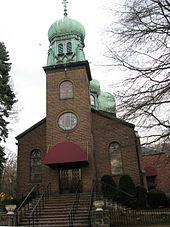
Southeast Yonkers is mostly Irish-American (many of the Irish being native born) and Italian-American. Many of the businesses and type of architecture in southeast Yonkers bear a greater resemblance to certain parts of the Bronx, Brooklyn, Queens, or Staten Island than to points north. This is not surprising as southeastern Yonkers is largely within walking distance of the Riverdale, Woodlawn, and Wakefield sections of the Bronx. Many residents regard eastern McLean Avenue, home to a vibrant Irish community shared with the Woodlawn section of the Bronx, to be the true hub of Yonkers.
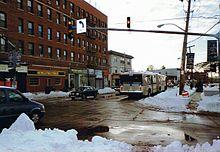
Similarly, a portion of Midland Avenue in the Dunwoodie section has been called the "Little Italy" of Yonkers. Landmarks of southeastern Yonkers include the Cross County Shopping Center, Yonkers Raceway, and St. Joseph's Seminary in the Dunwoodie neighborhood, which was visited by Pope John Paul II in October 1995 and later by Pope Benedict XVI in April 2008.
This area in Yonkers has suffered from past economic, political, and social challenges. Early in the 21st century a decrease in crime rate and a juxtaposition of poverty and revitalization mirrored newly gentrified neighborhoods of New York City's Harlem and Brooklyn. Off South Broadway (a major thoroughfare) one can find residential neighborhoods, such as Nodine Hill, Park Hill, and Hudson Park (off the Hudson River) with residential streets of turn-of-the-century mansions, and upscale luxury rentals and condominiums. Other upscale neighborhoods are Ludlow Park, Hudson Park & Van Cortlandt Crest, off Riverdale Avenue, right over the Riverdale border - the former alongside the Hudson River.
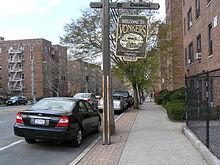
The area is also home to significant historical and educational institutions including the historic Philipse Manor Hall (a New York State Historic Site that houses one of three papier mache ceilings in the United States), The Science Barge, Beczak Environmental Education Center, and a 2003 Yonkers Public Library.
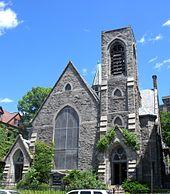
Many southwesterners are of African, Caribbean, Italian, or Hispanic descent while an influx those from other cultural backgrounds has continued to shape a culturally diverse community. Some neighborhoods right on the Riverdale border are increasingly becoming home to Orthodox Jews. The revitalization of the downtown Yonkers/Getty Square area has helped to nurture growth for Southwest Yonkers.
In the early 2000s several new luxury apartment buildings were built along the Hudson. There is also a new "Sculpture Meadow on the Hudson," renovation of a Victorian-era pier, and a new public library housed in the remodeled Otis elevator factory. Peter Kelly's award-winning fine dining restaurant X20 - Xaviars on Hudson is located at the renovated pier with much success. There are new proposals along with the current projects which are intended to revitalize downtown Yonkers.
Yonkers is typically a Democratic stronghold just like the rest of Westchester County and most of New York state, but until recently it had a Republican lean. In 1992, Yonkers voted for George H. W. Bush over Bill Clinton and Ross Perot for president, but has voted solidly Democratic ever since. That said, recent mayors of Yonkers have included Republicans Phil Amicone and John Spencer, while the Yonkers City Council was also mostly controlled by Republicans until recent years. The current mayor is Democrat Mike Spano. In the State Assembly, Yonkers is represented by Democrats J. Gary Pretlow and Shelley Mayer, and in the New York State Senate, by Democrats Andrea Stewart-Cousins and Jeffrey Klein. At the federal level, Democrats hold both congressional districts that include parts of Yonkers, with representatives Eliot Engel and Nita Lowey holding the seats as of 2011.
Yonkers is governed via a mayor council system. The council consists of six members each elected from one of six districts. The mayor and city council president are elected in a citywide vote.
Public schools in Yonkers are operated by Yonkers Public Schools.
Sarah Lawrence College which gives its address as Bronxville is actually located in Yonkers
Libraries are operated by the Yonkers Public Library.
The Japanese School of New York was located in Yonkers for one year. On August 18, 1991 the school moved to Yonkers from Queens, New York City. On September 1, 1992 classes began at its current location in Greenwich, Connecticut. St. Peter's Catholic Elementary School at 204 Hawthorne Avenue, founded by the Sisters of Charity, celebrated its 100th anniversary in September 2011
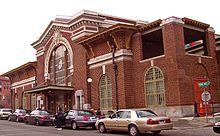
Yonkers has the eighth-highest rate of public transit ridership among cities in the United States. It has four Hudson Line Metro-North Railroad stations providing commuter service to New York City: Ludlow, Yonkers, Glenwood and Greystone. The Yonkers station is also served by Amtrak. Several Harlem Line stations are on or very near the city's eastern border. These include Wakefield, Mt. Vernon West, Fleetwood, Bronxville, Tuckahoe and Crestwood.
Bus service is provided by the Westchester County Bee-Line Bus System, and an MTA Bus Company express route to Manhattan.
New York Water Taxi formerly operated a ferry service from downtown Yonkers to Manhattan's Financial District, but it ceased in December 2009.
Major limited-access roads in Yonkers include Interstate 87 (the New York State Thruway), the Saw Mill, Bronx River, Sprain Brook and Cross County parkways. US 9, NY 9A and 100 are important surface streets.
The former New York and Putnam Railroad running through the middle of Yonkers has been converted into a paved walking and bicycling path, called the South County Trailway. It runs north-south in Yonkers from the Hastings-on-Hudson border in the north to the Bronx border in the south at Van Cortlandt Park.
The historic Croton Aqueduct tunnel has a hard-packed dirt trail running above it for most of its length in Yonkers, with a few on-street routes near Getty Square.
The city of Yonkers is protected by 459 firefighters of the city of Yonkers Fire Department(YFD). Founded in 1896, the YFD operates out of 12 Fire Stations, located throughout the city in 2 Battalions, under the command of 2 Assistant Chiefs per shift. The Yonkers Fire Department also operates a fire apparatus fleet of 11 Engines(including 1 Squad Engine), 6 Ladders, 1 Rescue, 1 Fireboat, 1 Mask Service Unit, 1 Collapse Unit, 1 Foam Unit, 1 Fire Investigation Unit, 1 Urban Search and Rescue Unit, 1 Field Command Unit, 1 Field Communications Unit, 1 Water Tender, and numerous other special, support, and reserve units. The YFD responds to approximately 16,000 emergency calls annually.
In the Depression-era film Don't Tell the Wife (1937) Guy Kibbee's character, Malcolm J. Winthrop, lives in Yonkers. One of the characters jokes that going to jail is "better than Yonkers."
Yonkers is the setting of two feature films by local filmmaker Robert Celestino: Mr. Vincent, a 1997 Sundance Film Festival entrant in the non-competition Spectrum section, and Yonkers Joe, a scheduled 2009 release by Magnolia Pictures, starring Chazz Palminteri and Christine Lahti. Yonkers' locations also provide the setting for A Tale of Two Pizzas, a "Romeo and Juliet" theme played out among two rival pizza owners.
Yonkers' decades-long struggle with racial discrimination and housing segregation was described in a documentary, "Brick by Brick: A Civil Rights Story," seen on PBS stations in 2007.
The film "Doubt", starring Meryl Streep as Sister Aloysius Beauvier, filmed scenes for this movie at St. Marks Lutheran Church's school. Yonkers is also the location for many major filming projects: Catch Me if You Can, with Tom Hanks and Leonardo DiCaprio; Eternal Sunshine of the Spotless Mind, with Jim Carrey and Kate Winslet; Mona Lisa Smile, with Julia Roberts; A Beautiful Mind, with Russell Crowe, Big Daddy, with Adam Sandler, The Preacher's Wife (a remake of "The Bishop's Wife), with Denzel Washington and Whitney Houston; and Kate and Leopold, with Meg Ryan and Hugh Jackman. Some episodes of the new TV series Fringe were taped in the downtown. The City Hall Courtroom is also the setting for many film and commercial scenes.
Yonkers was also used as a filming location in the movie Riding In Cars With Boys
The starting scene from Eternal Sunshine of the Spotless Mind where Joel Barish played by Jim Carrey drives his car up Riverdale Ave. and then turns right on Valentine Lane to his apartment.
In Max Brooks's novel, World War Z, the US armed forces are defeated in the Battle of Yonkers by an army of zombies.
Steve Meretzky created several Infocom games, such as Sorcerer. One of the spells in that game, "Yonk", is named after Yonkers.
Dunder Mifflin, the fictional paper supply company from NBC's The Office at one time had a branch in Yonkers, but the branch was closed during the course of the show.
Yonkers is one of the settings in the musical Hello Dolly!
A character in the musical Gypsy: A Musical Fable is named after Yonkers.
Neil Simon wrote a play entitled Lost In Yonkers, set in the city. The story is about two young boys during World War II, whose father leaves them with their grandmother in Yonkers so he can earn money for the family.
In the episode "The One With Ross' Tan" of Friends, Yonkers is mentioned as the town where Monica and Phoebe's old friend, Amanda Bouvamonteezi, is from.
In the episode "The Handcuffs" of I Love Lucy, Mr Walters, the locksmith, has to return to his house in Yonkers.
In the Twilight Zone episode "What's In The Box" a philandering cab driver, played by William Demarest, tells his wife he was late coming home because he had to take a "fare" up to Yonkers.
Yonkers was shown on A Shot at Love 2 with Tila Tequila as it was contestant Kristy's hometown.
Yonkers is mentioned in Bon Jovi's song Raise Your Hands.
Yonkers was mentioned in the Family Guy Episode:"Stew-Roids" in a cutaway about a Charles Paumpert Movie: Distracting Trumpet.
Yonkers is mentioned in an episode of the show Grounded for Life, where character Lily Finnerty is supposedly going for a party.
In the 2010 film "Bounty Hunter," Gerard Butler's character Milo Boyd tells Jennifer Aniston's character Nicole Houston of a "great pizza place on Yonkers."
In the 2011 film "MIB III (Men In Black 3) Will take place in Radio Shack in Cross County.
American Idol Season 10 Contestant Melinda Ademi lives in Yonkers.
In the White Collar episode "Book of Hours" the character "Burrelli" mentions his vet in Yonkers.
In 2011, rapper Tyler, The Creator of Odd Future released his song "Yonkers" as the second single from his sophomore album Goblin. The song's music video has gone viral and currently has 44,312,977 views as of May 30, 2012.
On October 21, 2011, filming was done for the movie Disconnect (2012) at the Cross County Shopping Center in Yonkers.
Yonkers is twinned with:

Word Count: 5532






